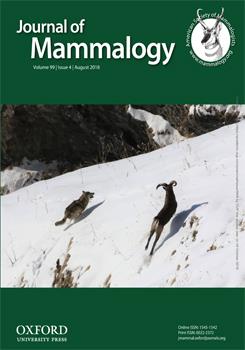We used Cormack–Jolly–Seber capture–recapture analyses to investigate differences in monthly survival of the southeastern beach mouse (
How to translate text using browser tools
23 May 2018
Influence of sex and transients on survival and detection probabilities of the southeastern beach mouse
David R. Breininger,
Donna M. Oddy,
Eric D. Stolen,
Danny K. Hunt
ACCESS THE FULL ARTICLE

Journal of Mammalogy
Vol. 99 • No. 4
August 2018
Vol. 99 • No. 4
August 2018
capture–recapture
Coastal dune
coastal strand
Peromyscus polionotus niveiventris




